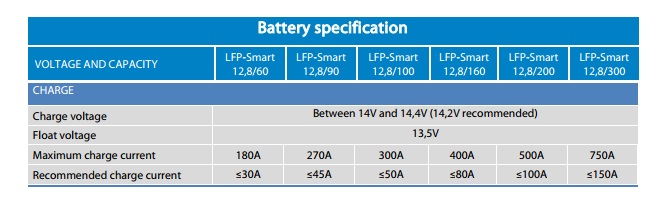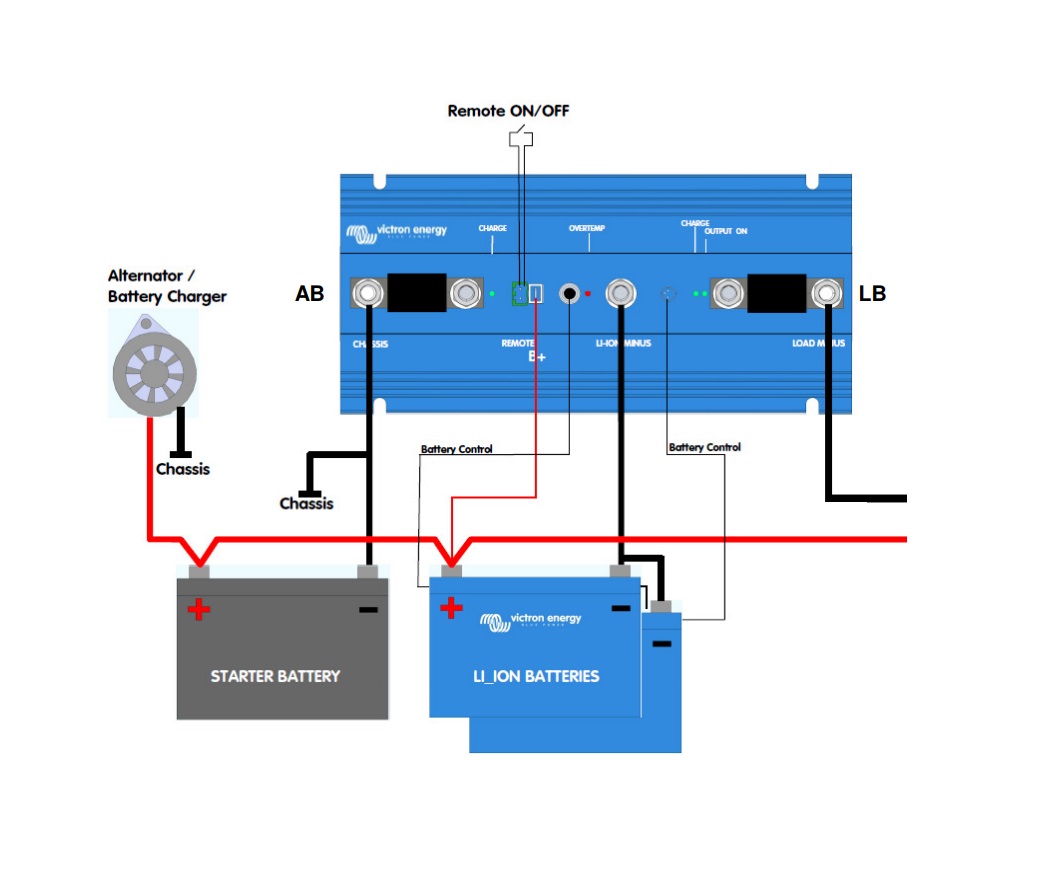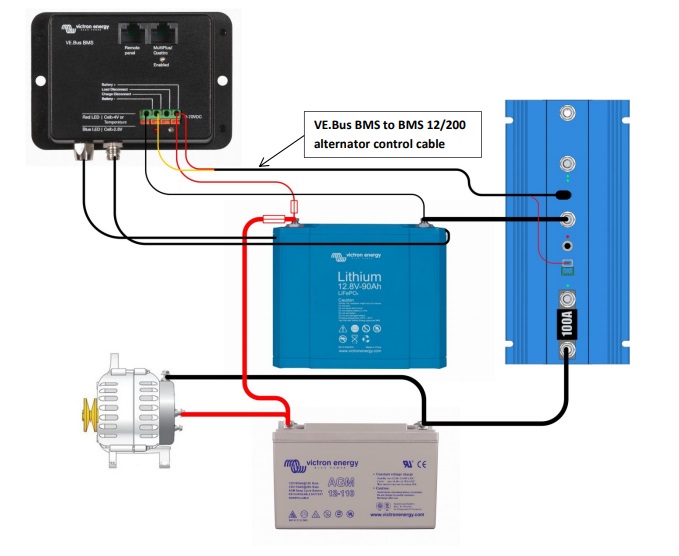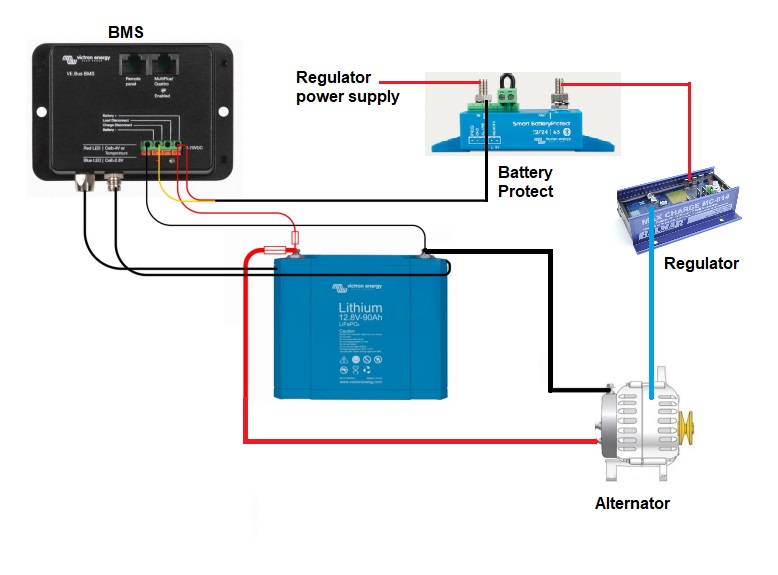The best way to incorporate an alternator into a Lithium-Ion Phosphate LFP battery system



In the layout above the alternator is charging a conventional start battery at all times. The start battery is connected to the Lithium Ion battery via the Cyrix-Li-Ct which is a battery combiner controlled by the BMS. When the Lithium Battery is full the combiner gets shut off but the alternator continues to charge the start battery. There is no current limiting shown, the alternator had better be up to the job or have active temperature control.

In this next diagram (above) the Victron 12/1200 BMS is used and this has a built-in way to limit the alternator to up to 100 Amps depending on what size fuse is placed in the left hand fuse holder. Note that the alternator always has a conventional battery to charge even when its output to the lithium battery is interrupted.
The Victron 12/1200 BMS has its limitations though so you might prefer to use the VE Bus BMS. Any system with a Multi-Plus or Quattro inverter charger is going to want to use the VE Bus BMS. The 12/1200 is really for smaller systems and has a limit of 100 Amps on the output side. In that case you can still use the VE Bus BMS as the BMS that is controlling the batteries but use the 12/1200 solely in its function as a current limiter. The wiring diagram would look like the one below. Again, as before, the alternator always has a backup battery to charge.

In the next drawing, below, the alternator is only charging the Lithium battery. The alternator is externally regulated by a Balmar MC-614-H regulator. The setup includes a temperature sensor on the alternator which limits its output by keeping the alternator within the allowed temperature. It is also possible to limit the alternator to a certain percentage of its rating in the regulator software. The ignition circuit of the regulator is controlled by the “allow to charge” signal from the BMS. When the battery is full the “allow to charge” signal turns off and so does the regulator and therefore the alternator. A small relay is required to turn on and off the regulator since the BMS “allow to charge” signal is not capable of supporting any real load. This needs to be a solid state relay because of its super low power consumption. We have found that one of the Victron Battery Protects inserted in the power supply to the regulator can serve this purpose.

In the next drawing, below, the alternator is only charging the Lithium battery. The alternator is externally regulated by a Wakespeed WS500 regulator. The setup includes a temperature sensor on the alternator which limits its output by keeping the alternator within the allowed temperature. It is also possible to limit the alternator to a certain Output Current of its rating in the regulator software but you have to install a shunt in the alternators main output cable. The ignition circuit of the regulator is controlled by the “allow to charge” signal from the BMS. When the battery is full the “allow to charge” signal turns off and so does the regulator and therefore the alternator.


A note about these diagrams
The diagrams on this page are block diagrams to illustrate a concept. They were all taken from published Victron Energy drawings available on the company website www.victronenergy.com They were edited to remove extraneous information not relevant to the immediate topic in hand. In general they don’t show circuit protection, battery switches or other similar item’s.
If I did have a question about all these systems, what happens when the engine is stopped? Does the lithium battery drain into the conventional battery? Here is the official answer: “The Cyrix-Li-ct will disconnect when the engine isn’t running and the starter voltage starts to drop much like the regular Cyrix. The BMS 12/200 blocks energy from flowing back to the starter battery altogether.”
